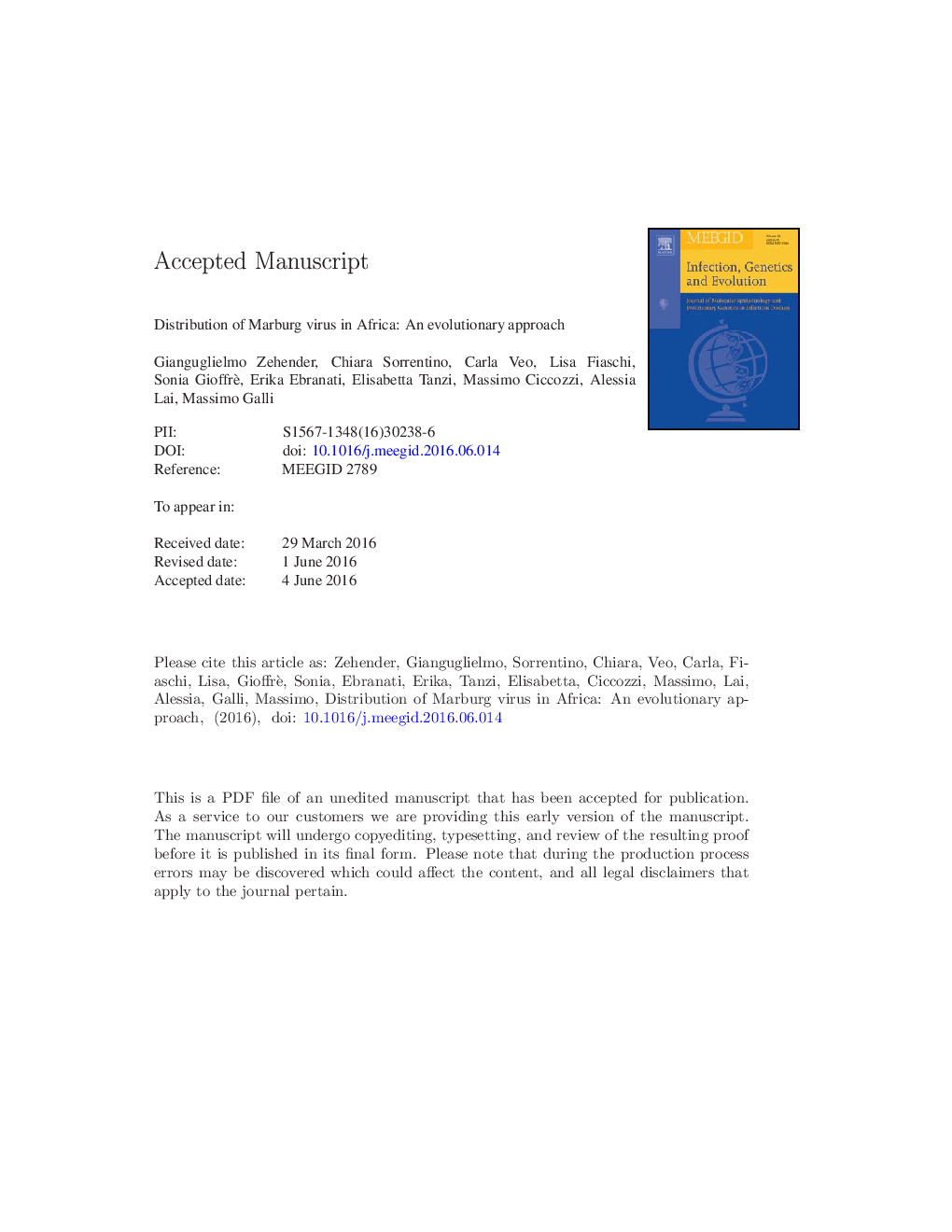| Article ID | Journal | Published Year | Pages | File Type |
|---|---|---|---|---|
| 5908107 | Infection, Genetics and Evolution | 2016 | 33 Pages |
Abstract
The aim of this study was to investigate the origin and geographical dispersion of Marburg virus, the first member of the Filoviridae family to be discovered. Seventy-three complete genome sequences of Marburg virus isolated from animals and humans were retrieved from public databases and analysed using a Bayesian phylogeographical framework. The phylogenetic tree of the Marburg virus data set showed two significant evolutionary lineages: Ravn virus (RAVV) and Marburg virus (MARV). MARV divided into two main clades; clade A included isolates from Uganda (five from the European epidemic in 1967), Kenya (1980) and Angola (from the epidemic of 2004-2005); clade B included most of the isolates obtained during the 1999-2000 epidemic in the Democratic Republic of the Congo (DRC) and a group of Ugandan isolates obtained in 2007-2009. The estimated mean evolutionary rate of the whole genome was 3.3 Ã 10â 4 substitutions/site/year (credibility interval 2.0-4.8). The MARV strain had a mean root time of the most recent common ancestor of 177.9 years ago (YA) (95% highest posterior density 87-284), thus indicating that it probably originated in the mid-XIX century, whereas the RAVV strain had a later origin dating back to a mean 33.8 YA. The most probable location of the MARV ancestor was Uganda (state posterior probability, spp = 0.41), whereas that of the RAVV ancestor was Kenya (spp = 0.71). There were significant migration rates from Uganda to the DRC (Bayes Factor, BF = 42.0) and in the opposite direction (BF = 5.7). Our data suggest that Uganda may have been the cradle of Marburg virus in Africa.
Related Topics
Life Sciences
Agricultural and Biological Sciences
Ecology, Evolution, Behavior and Systematics
Authors
Gianguglielmo Zehender, Chiara Sorrentino, Carla Veo, Lisa Fiaschi, Sonia Gioffrè, Erika Ebranati, Elisabetta Tanzi, Massimo Ciccozzi, Alessia Lai, Massimo Galli,
